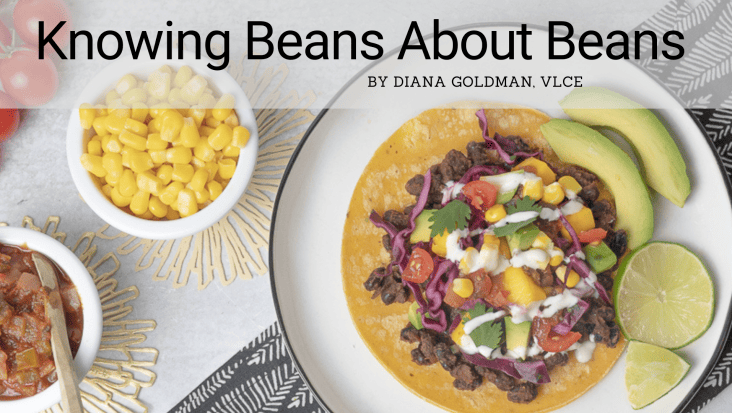posted March 26, 2024
There are so many reasons to love beans such as soy beans, chickpeas, lentils, edamame, black beans, and cannellini beans. They’re nutrient-rich, affordable, planet-friendly, and delicious.
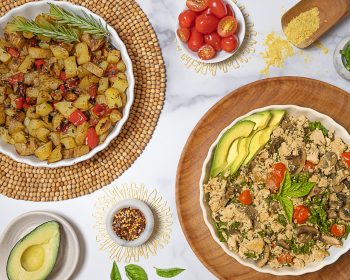
Beans are also are highly versatile. You can enjoy them for breakfast in a tofu-based dish like this Veggie Tofu Scramble with Mushroom & Basil.
Or in a flavorful and crowd-pleasing plant-based entrée such as Easiest Crab Cakes made with chickpeas and hearts of palm.
Beans are also a magic ingredient for making creamy plant-based desserts. This creamy and elegant Chocolate Mousse is made with silken tofu, derived from soy beans. It’s rich and creamy and a serious crowd pleaser.
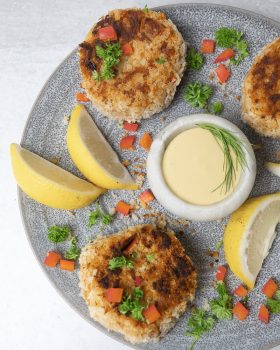
Not only are beans a wonderfully versatile ingredient, but they’re high in dietary fiber, low in saturated fat, and high in antioxidants and phytonutrients as well. These are dietary components for minimizing disease.
In addition to being nutritional powerhouses, beans are also inexpensive and planet friendly. Swapping animal products out for beans is one of the single most impactful actions we can take for the health of the planet.
That’s a bold statement, I know. Let’s dive deeper into why that is.
The Impact of Food Choice on Global Warming and Climate Change

The production of animal-based foods emits greenhouse gases, the three most impactful being carbon dioxide, methane, and nitrous oxide. Beef, lamb, pig meat, chicken, and cheese top the list (along with chocolate and coffee…oh no!) across the supply chain. All of these gases contribute to global warming and climate change.
Why so much gas emission in the production of beef, lamb, pig meat, chicken, and cheese? It results from land use, growing and transporting feed, animal belching and flatulence, and the processing, transporting, and packaging to market.
What about plant foods such as beans, vegetables, and grains? Doesn’t their production emit gases as well? Yes, but in general, on a much smaller scale than the production of beef and dairy.
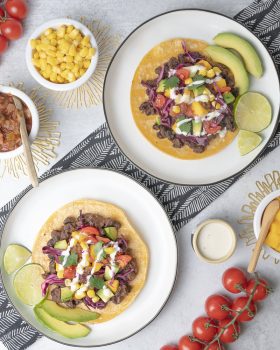
Consider this. One of my favorite dishes to make for a crowd is Black Bean Tortillas with Cabbage Slaw & Lime Crema.
Each component of this dish has its own star power. A protein-packed, spicy black bean filling, seasoned with aromatic spices and herbs, is perfectly complemented by a zesty and refreshing cabbage slaw, sweet mango, and smooth lime crema. This is one of those dishes I love to serve with all the components laid out on a table so that everyone can pick and choose what to load onto their plate.
I particularly love that this dish swaps beef for black beans in a tortilla, making it a climate-friendly choice.
Comparison of Greenhouse Gas Emissions
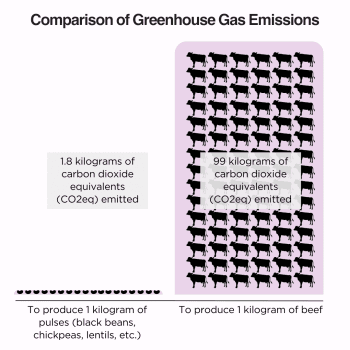
As we can see, tortillas made with beans are about fifty times more climate-friendly than tortillas made with beef.
By turning to beans we are choosing a versatile, satisfying, flavorful, and filling ingredient. We can feel great knowing that when enjoying them in plant-based dishes, we’re casting our votes for the health of the planet for generations to come.

Diana Goldman is a chef, food photographer, and culinary educator based in Boston, and a Main Street Vegan Academy graduate. Her cookbook Plants for You will be published fall of 2024. Preorder it here.
Diana has presented on plant-based cuisine at numerous companies, organizations, and institutions, including Unilever, The Sierra Club, the T. Colin Campbell Center for Nutrition Studies, Harvard University, and MIT. She has also been awarded multiple grants from Harvard Pilgrim Health Care to teach healthy cooking classes in Boston.
She received a B.S. in Nutritional Sciences from Cornell University and an Ed.M. from Harvard University. Diana adopted a plant-based lifestyle in 2013 and continues her nutrition and culinary education. She loves sharing what she’s learned and the recipes she has created with others.
You can find Diana’s recipes on BeantownKitchen, named one of the top 100 plant-based blogs by Feedspot.

